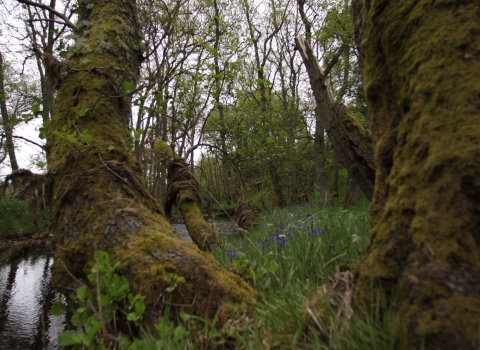Please note: Due to considerable damage from the storms before Christmas, walking routes are all closed until necessary repairs can be made by Forestry England - visit their website for more information here.
Holystone North Wood
Know before you go
Dogs
When to visit
Opening times
24/7/365Best time to visit
All year roundAbout the reserve
Holystone North Wood is an upland sessile oakwood and is recorded as an ancient semi-natural woodland site. There is evidence of some coppicing and parts of the wood were last worked about 60 years ago. This type of woodland, typical of the Lake District and North Wales, is found here under much drier climatic conditions and examples in the eastern part of Northumberland are particularly scarce. Tree cover is made up predominantly of sessile oak, with birch, rowan and holly. The wood is densely and uniformly stocked and many of the trees are thought to be between 100 and 150 years old, although some specimens could be much older. A substantial number of the trees are twisted and many are multi stemmed which suggests previous coppicing.
Many of the trees hang with lichens such as usneas and bryorias, giving an almost primeval sense to the site. The twisted tree trunks and dead branches provide good habitat for birds and invertebrates. Birds typical of broadleaved woodland have been recorded such as blue tit, great tit, coal tit, pied flycatcher and great spotted woodpecker.
The ground flora is relatively poor but typical of acidic oak woodland on dry, sandy soils, but has suffered impoverishment as a result of sheep grazing in the past. Bracken, wavy hair grass and soft grass are dominant but notable species include chickweed wintergreen and lesser twayblade. The moss Leucobryum glaucum is widespread, the hummocks of which are a special feature of the wood. In addition, plants such as wood anenome, wood sorrel and chickweed wintergreen are present.
Heather occurs along the northern margin of the site and there is a small flush with bog mosses sphagnum and the uncommon lesser twayblade. Among the larger mammals roe deer are common and rabbits are present in good numbers. Although the area is no longer grazed by sheep both the roe deer and the rabbits will have an impact on the ground flora and more importantly on tree regeneration. A 1999 survey identified a possible 4 species of bats; pipestrelle, Daubentons bat, Natterers and whiskered.


